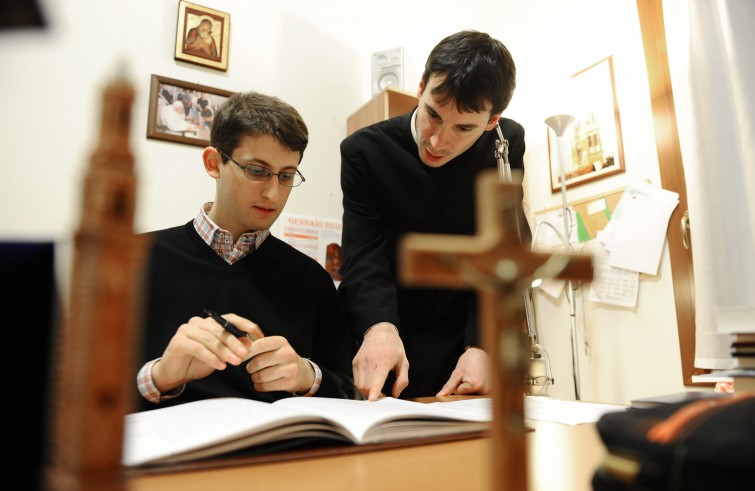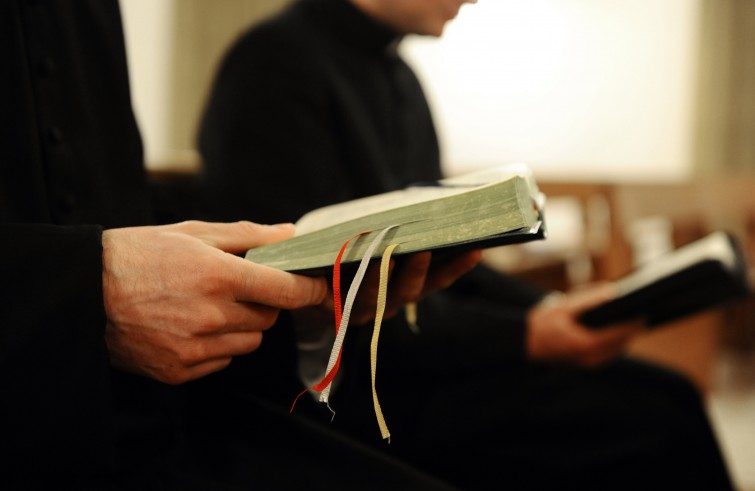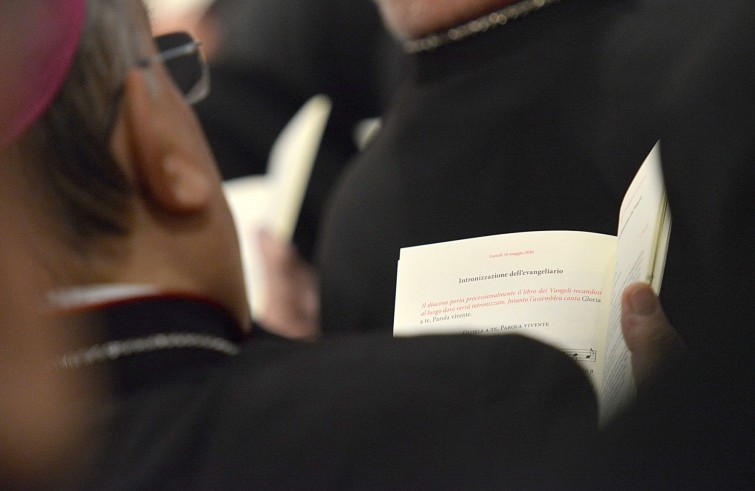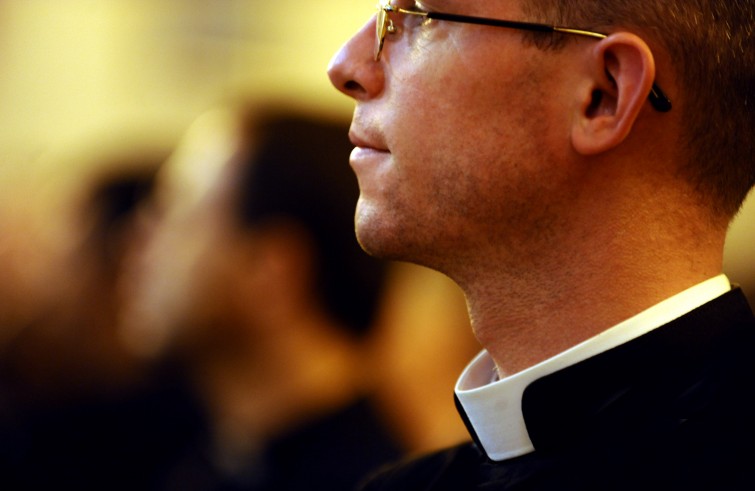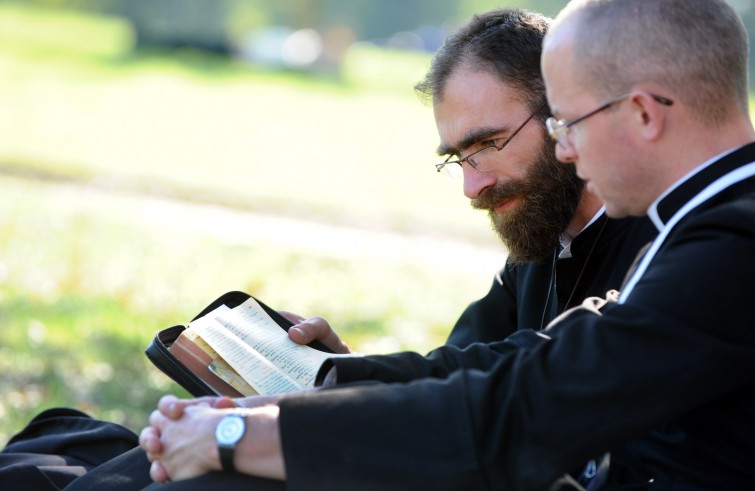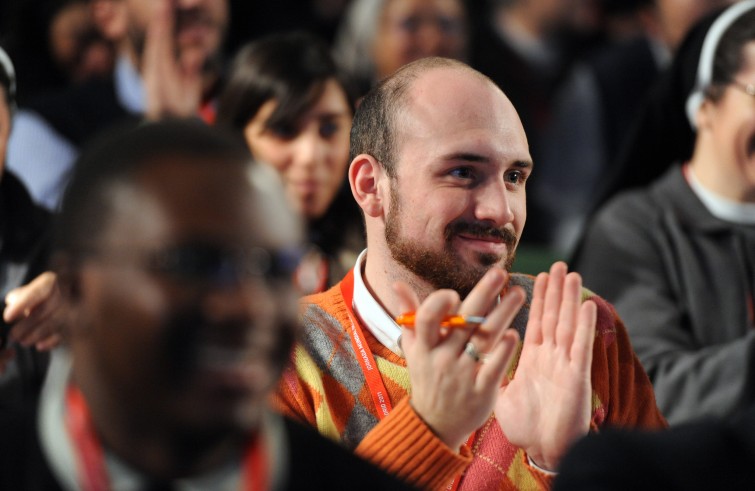
The compendium is meant “to address the various tiles of the mosaic representing the permanent formation of the clergy”, encompassing the work carried out in the past years at various levels by the Italian Bishops. The definition of the document, concluded during the latest Permanent Bishops’ Council (Rome, September 26-28), reaffirms the importance of a theme – the renewal of the clergy –that is particularly dear to the Italian bishops. Monsignor Gualtiero Sigismondi, bishop of Foligno, is the President of the Bishops’ Commission for the Clergy and Consecrated Life. He closely followed the process undertaken to date; ushered in by Monsignor Francesco Lambiasi, bishop of Rimini, when he served as president of the same Commission.
Your Excellency, what are the features of permanent formation?
I would like to use the image of a door, particularly inspiring and evocative in this Holy Year. First of all there is the threshold, that is, the initial formation. Then there are the two doorjambs of Episcopal paternity and sacramental fraternity. The lintel is the care of our inner life. The key that opens this door wide open is pastoral charity.
Does it help us “walk through” this door? We are standing on the threshold that is initial formation, namely, the path of the seminary. The choice is clear: no form of permanent formation can bridge a deficit in the initial formation.
Experience has shown that the resolution and the quality of a priest depend on the seminary, and to a great extent also on the formators entrusted with the task of discerning and accompanying seminarians in completing their journey.
It’s important that an educator be fully dedicated to this service, in order to help seminarians respond to the fundamental question of vocation: “Who are you, my Lord?” It’s the fundamental question that sets the “powerful timeframe” of the Seminary, a season loaded with promises, where we learn the art of “keeping our eyes fixed on Jesus.” Our gaze is extremely important in the realm of vocational discernment: it’s the indicator that show us the direction for our minds and our hearts. Our eyes are the “lights of our body” which highlight the dwelling place of our mind and heart!
From the threshold to the jambs of our door… Let’s speak of Episcopal paternity and sacramental fraternity, two themes that are very dear to Pope Francis, who relentlessly exhorts the bishops to be close to the priests.
The Pope highlights the bishops’ proximity to the presbyters. The renewal of the clergy, which entails permanent formation, entails the presence of a bishop who is dedicated fully to this service. The permanent formation of the clergy thus is the litmus test on the bishop’s agenda. It dictates the choices that need to be made in the program of the day, in the distribution of time, in the acceptance of commitments or interventions. Helping the priests to perceive Episcopal paternity will make it easier for them to enjoy priestly fraternity.
- foto SIR/Marco Calvarese
Is the exercise of paternity a need shared by the bishops?
The care of the priests and deacons is the first pastoral decision of a bishop.
Missionary and pastoral conversion, which Pope Francis is exhorting us to carry out, cannot take place without the harmonious unity of the presbyters, that they may be “one heart and one soul.” The need of “journeying together”, “the first form of evangelization”, does not respond to the claim “united we are strong” but to the following rule of fraternal life: “Harmony is the premise of the Pentecost.”
Let us return to the image of the door: why does the lintel represent the care of our inner life? Is it because its absence is one of the most widespread problems of our times?
It’s the nerve centre of the permanent formation of the clergy. The care of our inner life entails incorporating the Word of God – it would be beautiful if it occurred together – and the silence of Eucharistic adoration, that sets the seal on the celebration of Mass.
A true priest knows how to take care of the harmonious tension between being alone with God and the communion with our brothers, he does not waste the time devoted to silence and to the prayers of intercession.
In his Homily for the Chrismal Mass this year, the Pope guarded the priests against a “virtual worldliness that is opened and closed by a simple click.” This is a deception that must be cured, for the clicks may increase our contacts but they fail to establish relationships. Our relationship with God is the key to creating authentic relationships with our brothers.
We’ve reached the key of the door – “pastoral charity” – defined as the strategic goal. How can the laity be involved in this process?
I’d like to recall a passage from Acts. After the Pentecost the Twelve realize they have been neglecting the Word of God and they immediately take remedial action. They choose “seven men who are known to be full of the Spirit and wisdom” to serve tables and give themselves “continually to prayer, and to the Ministry of the word.” Involving all the People of God in missionary and pastoral conversion, in addition to furthering the synodal process, helps ordained ministers to overcome the asthma caused by their engagement as well as the – implicit and unconfessed, sometimes even unconscious – opinion whereby the faithful are the “employees” or the “customers” of the clergy.
Thus the “pastoral care” of formation is the indispensable path leading to a truly “outgoing” Church…
If we were to take an image it could be said that it is necessary
to go from the pastoral care of the bell tower to that of the doorbell, without renouncing the toll of the bells.
And yet we will be able to ring the doorbells if we are capable of kneeling down before the altar. The care of our inner life is the fist form of pastoral care, the most important one, which enables ordained ministers to discover their identity as “caring servants of the People of God”, tireless in their self-giving, content and welcoming towards everyone.

